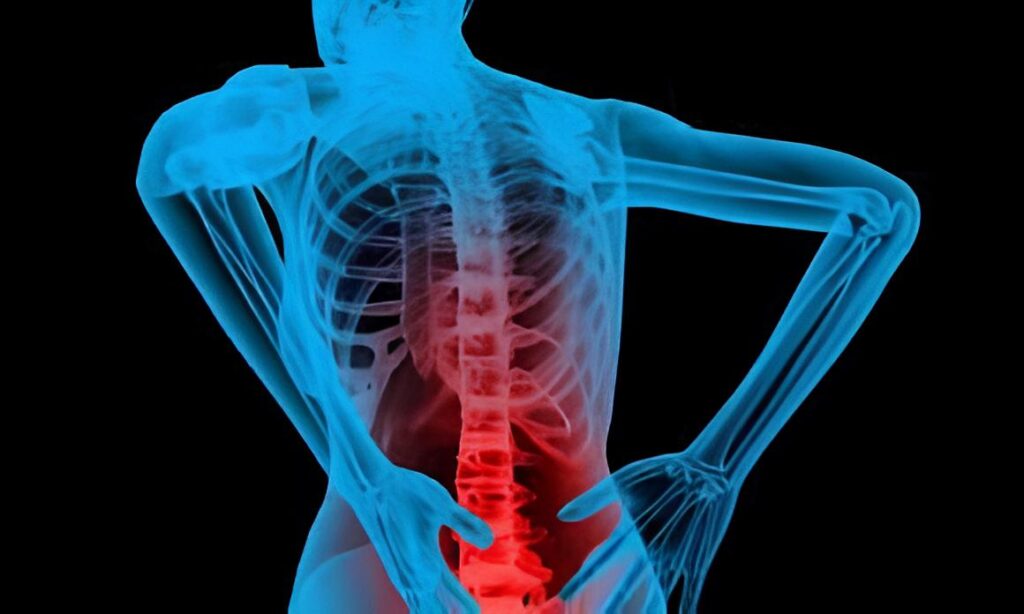“Bone TB” refers to ostearticular tuberculosis, a form of tuberculosis (TB) that affects the bones and joints. It’s caused by Mycobacterium tuberculosis, the same bacterium that causes pulmonary TB, but it spreads from the lungs (or other primary sites) to the skeletal system, typically through the bloodstream.
Causes of bone tb
The primary cause of bone tuberculosis (bone TB) is infection with Mycobacterium tuberculosis, the bacterium that also causes pulmonary TB. Here’s how it typically develops:
- Hematogenous spread of Mycobacterium tuberculosis from a primary focus (often the lungs) to the bones or joints.
- This usually happens when TB is not properly treated or becomes systemic.
Risk factor
These do not cause bone TB directly, but they increase the risk:
- Pulmonary TB (most common primary source).
- Weakened immune system:
- HIV/AIDS
- Diabetes
- Malnutrition
- Cancer or chemotherapy
- Immunosuppressive therapy (e.g., for organ transplants or autoimmune diseases)
- Close contact with active TB cases.
- Living in or traveling to TB-endemic regions.
- Poor living conditions, such as overcrowded housing or poor ventilation.
- Age extremes (children and elderly are more vulnerable).
Symptoms of bone tb
- Low-grade fever, especially in the evening
- Night sweats
- Fatigue
- Loss of appetite
- Weight loss
Spinal TB (Pott’s Disease) – Most common form:
- Back pain (persistent and worsening)
- Stiffness in the back
- Spinal deformity or kyphosis (hunchback)
- Tenderness over affected vertebrae
- Numbness, weakness, or paralysis (if spinal cord is compressed)
Joint TB (e.g., hip, knee):
- Swelling and warmth over the joint
- Joint stiffness or restricted movement
- Pain during movement or even at rest
- Joint effusion (fluid build-up)
- Limping (if lower limbs are involved)
Long Bone TB:
- Localized pain in the bone
- Swelling or tenderness
- Possible sinus tract formation (chronic draining wound in advanced stages)
Diagnosis
X-rays, CT scans, MRI – to assess bone destruction and soft tissue involvement.
Tuberculin skin test (TST) or IGRA.
Biopsy or aspiration for culture or PCR of M. tuberculosis.
Blood tests (ESR, CRP).
Physiotherapy management of bone tb
Physiotherapy plays a vital role in the rehabilitation and functional recovery of patients with bone TB, especially after the acute infection is controlled with medication. The goals are to reduce pain, maintain joint mobility, improve strength, and restore function.
Phases of Physiotherapy Management:
1. Acute Phase (During Active Infection / Immobilization):
Goals:
- Control pain and inflammation
- Prevent complications due to immobility
Interventions:
- Rest of the affected area (may involve braces, orthoses, or splints)
- Positioning to prevent deformities
- Isometric exercises to maintain muscle tone
- Breathing exercises (especially in spinal TB or post-surgery cases)
- Gentle active/assisted ROM (in unaffected joints)
2. Post-Acute / Subacute Phase (After Inflammation Subsides):
Goals:
- Restore joint mobility
- Begin gradual weight-bearing (as allowed)
- Improve muscle strength
Interventions:
- Passive to active-assisted ROM exercises
- Stretching exercises to reduce stiffness
- Progressive strengthening exercises
- Gait training with aids (walker/crutches initially)
- Pain relief modalities (e.g., TENS, hot packs—only if no active infection remains)
3. Chronic / Recovery Phase:
Goals:
- Restore full function
- Prevent or correct deformities
- Improve endurance and balance
Interventions:
- Full active ROM and strengthening
- Proprioceptive and balance training
- Postural correction exercises (especially in spinal TB)
- Functional training (e.g., climbing stairs, walking on different terrains)
- Education on joint protection and body mechanics
Q1. What is osteoarticular tuberculosis and how does it spread?
Osteoarticular tuberculosis is TB of the bones and joints caused by Mycobacterium tuberculosis, spreading from the lungs via the bloodstream.
Q2. What are common symptoms of spinal TB (Pott’s disease)?
Common symptoms include persistent back pain, spinal stiffness, kyphosis, and possible neurological deficits like weakness or numbness.
Q3. How does physiotherapy help in bone TB recovery?
Physiotherapy helps reduce pain, restore mobility, strengthen muscles, and improve functional independence during and after infection control.

